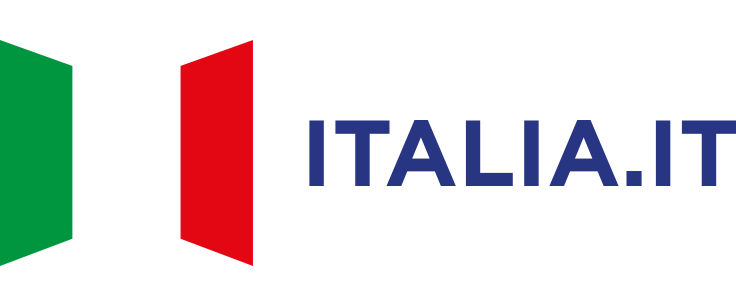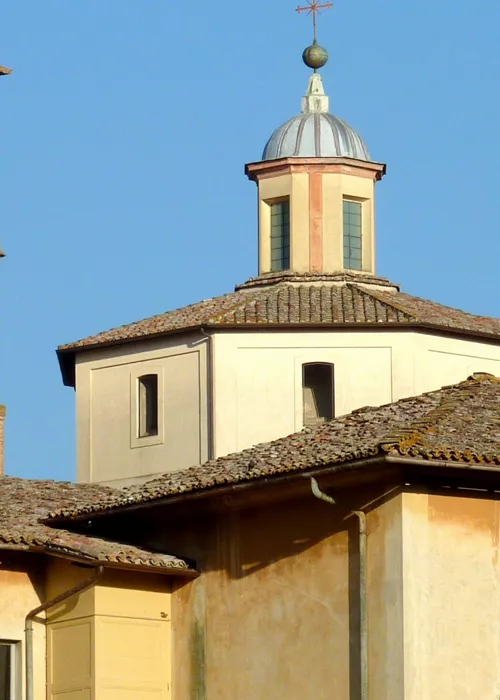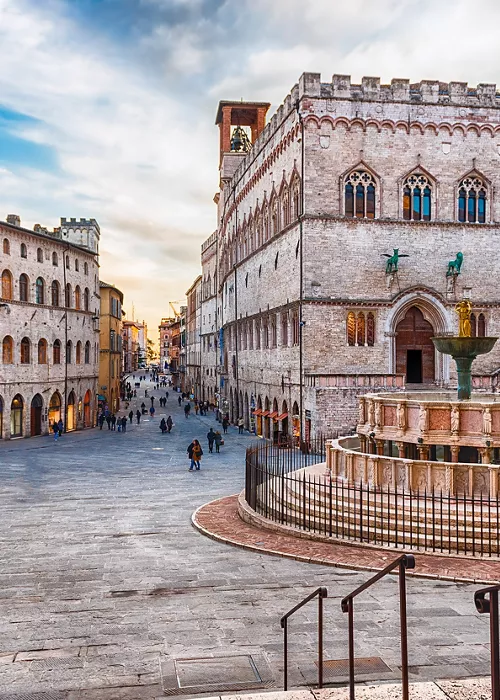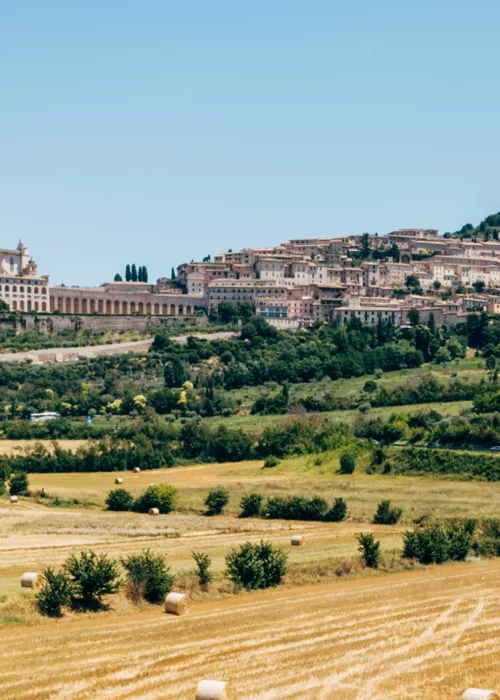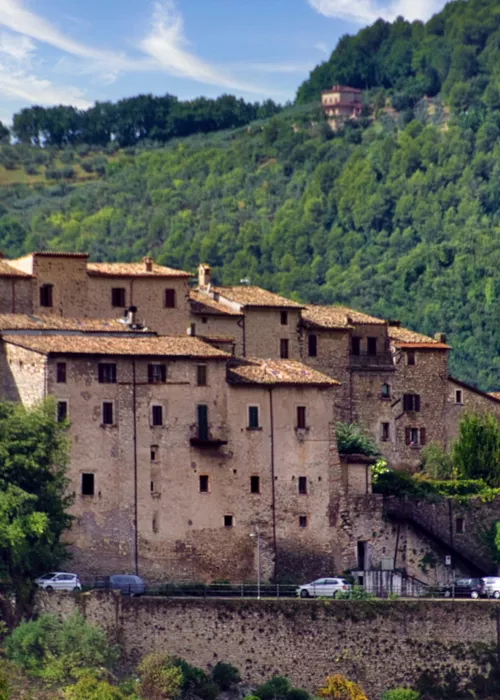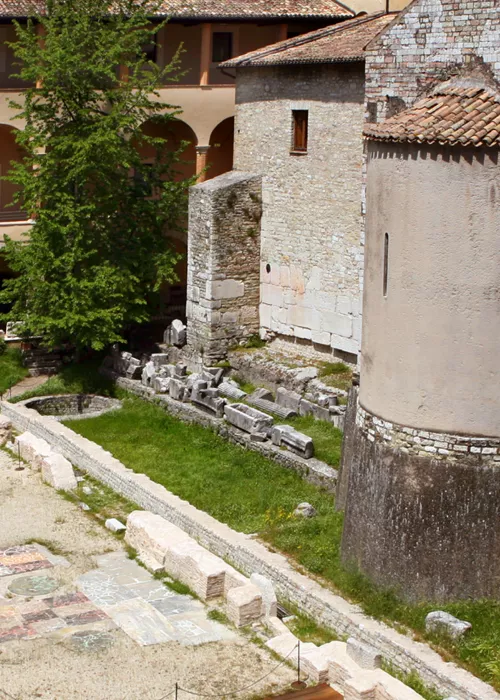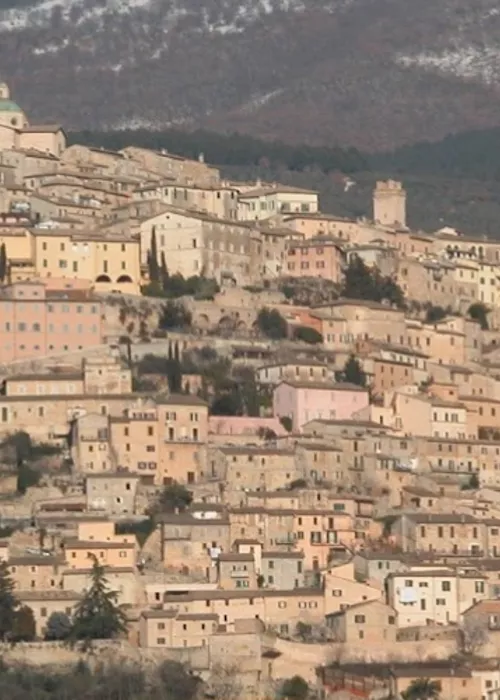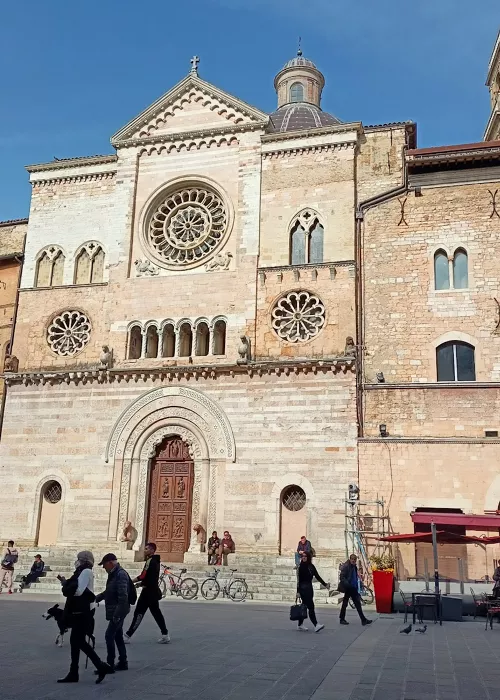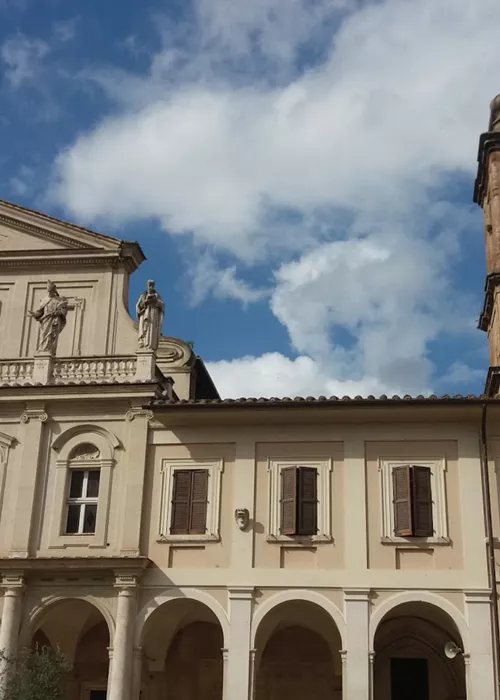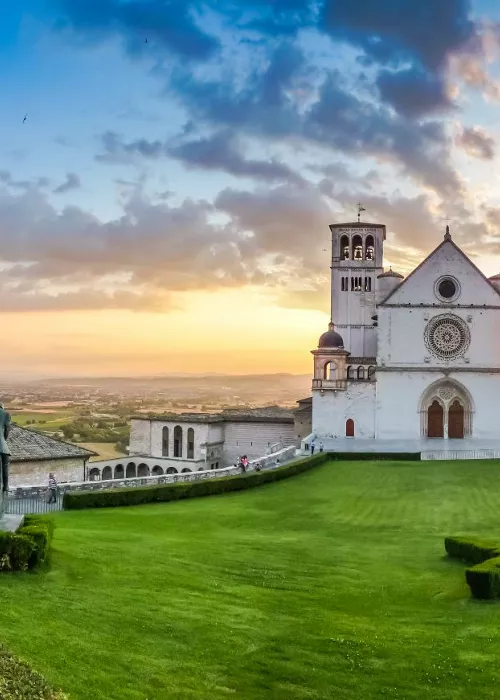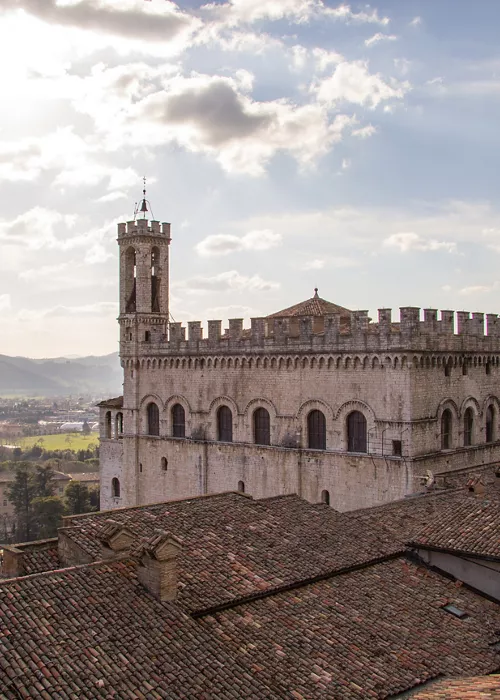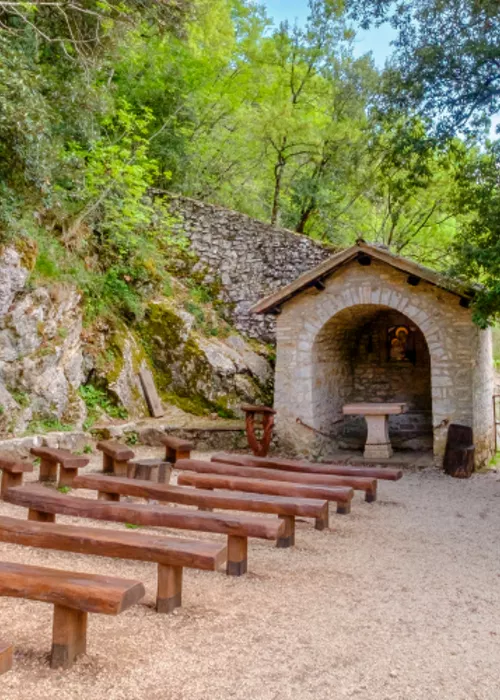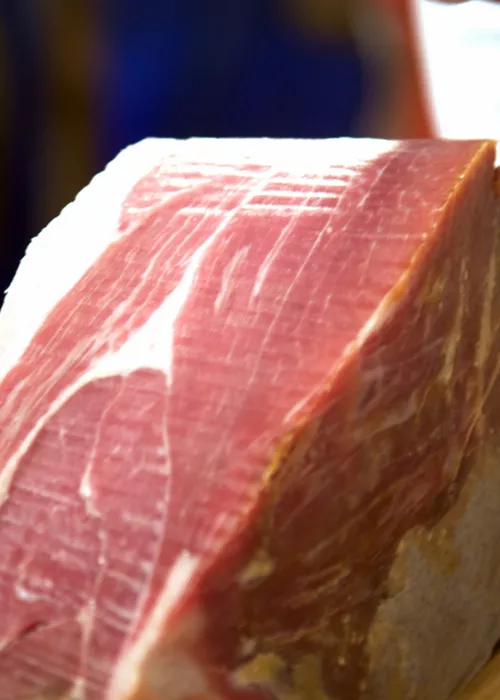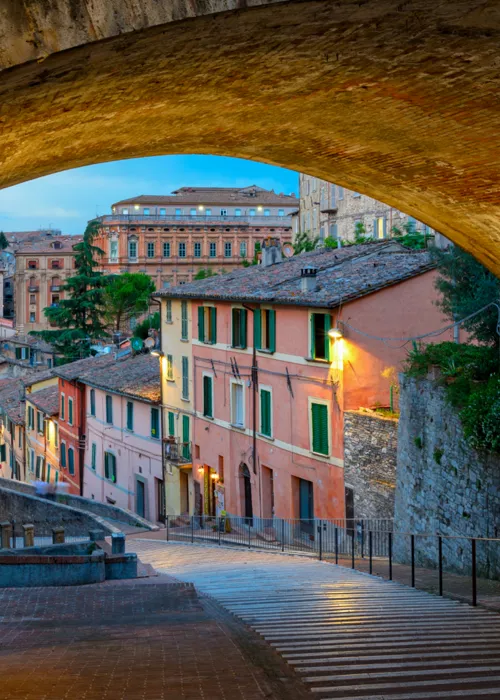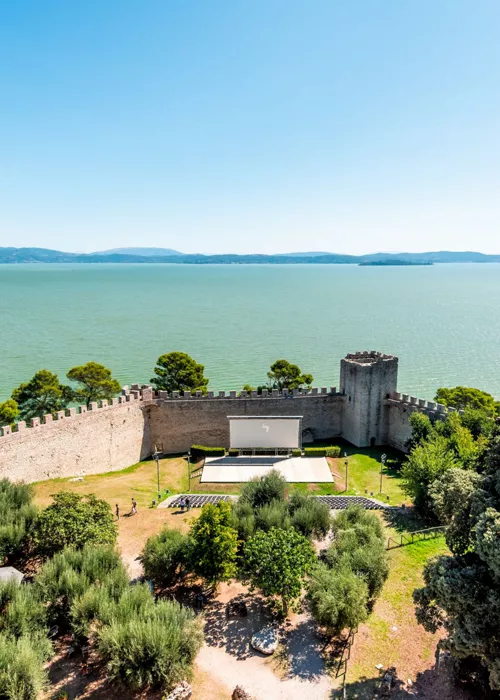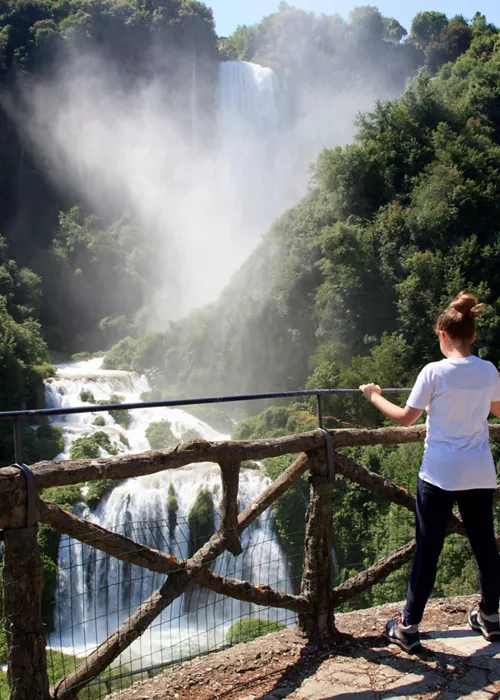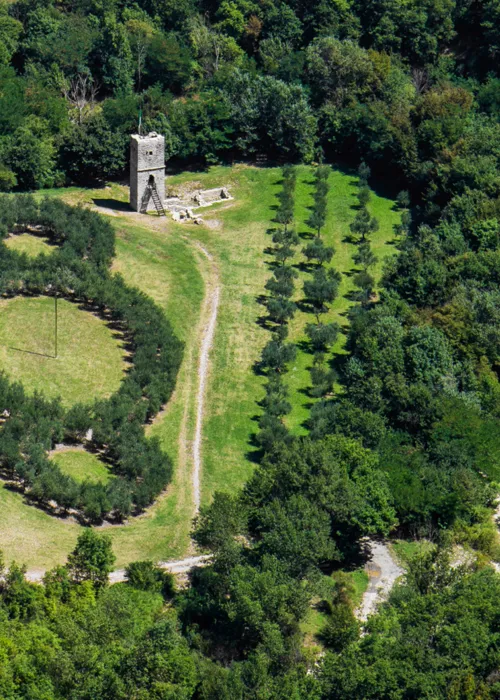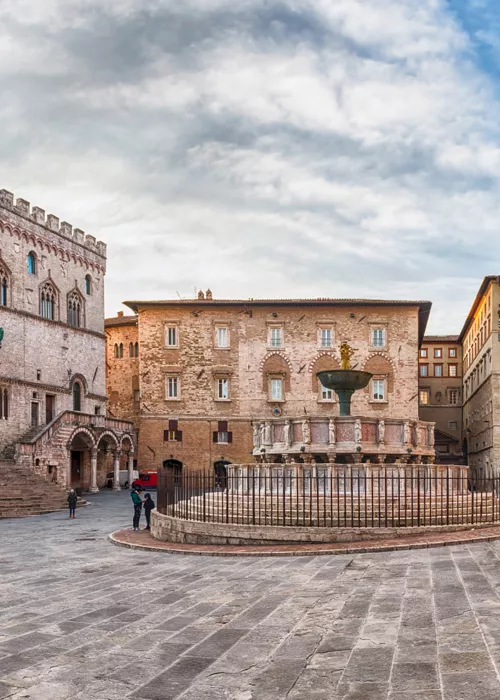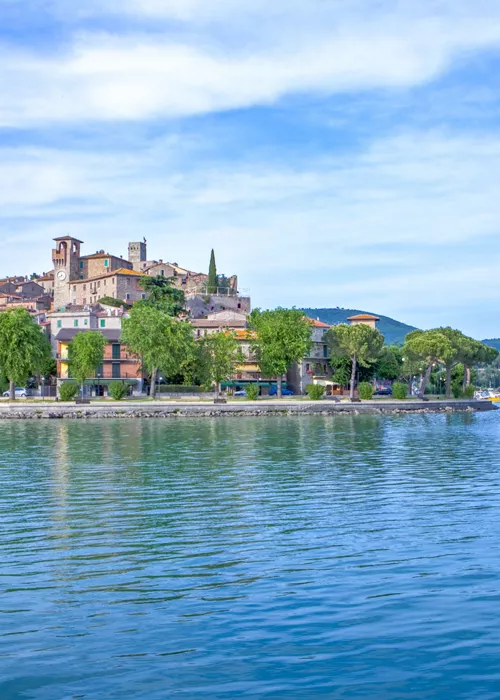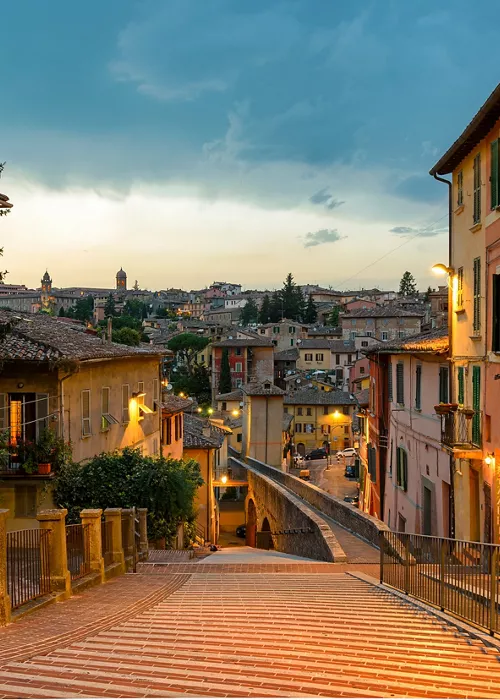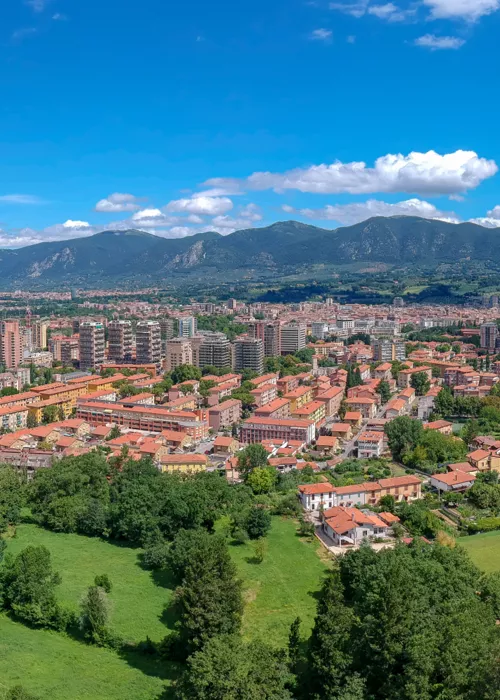Umbria: The Way of Saint Francis
7 minutes
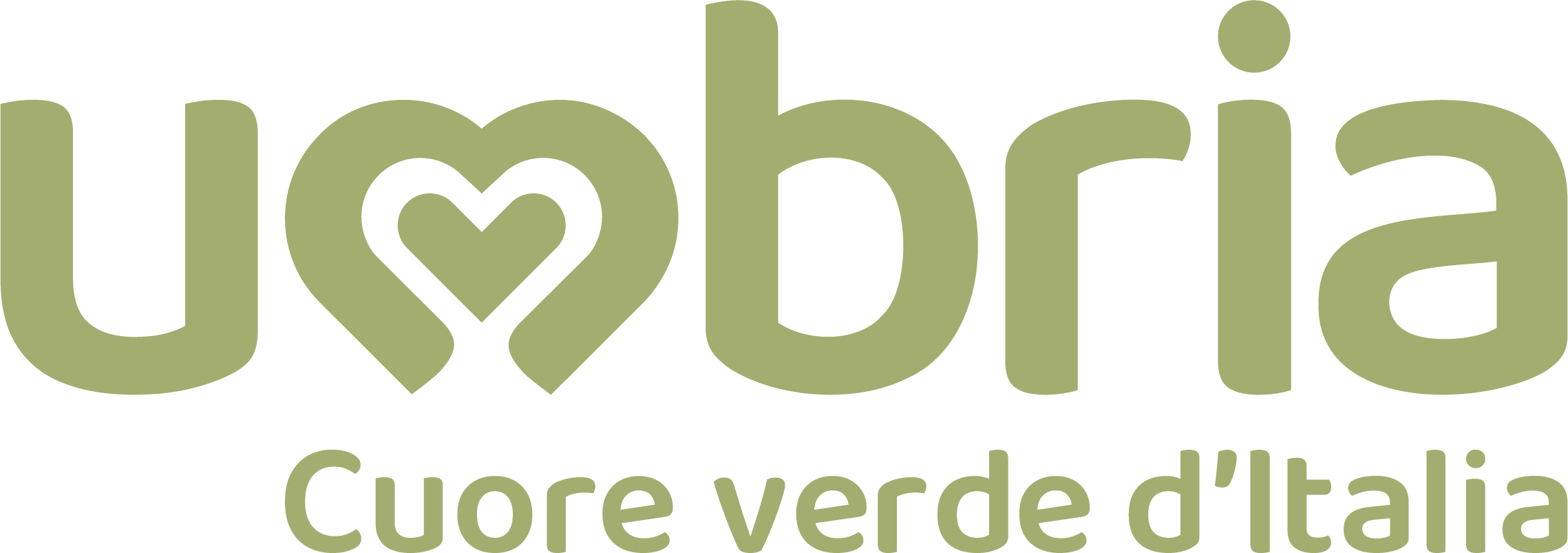
Index
The Via di Francesco (Saint Francis’ Way) is a walk in the footsteps of the Saint of Assisi, along some 450 kilometres of paths winding through Tuscany, Umbria and Lazio. The Via di Francesco connects places bearing witness to the life and preachings of Il Poverello (the poor man), starting from Florence, La Verna or Rimini (the ‘northern way’) or from Rome (the ‘southern way’) and finishing in Assisi, his birthplace.
Following the stages of the Via di Francesco, travellers walk in the tranquillity of unspoilt nature reserves, rest their legs and minds at remote hermitages only accessible on foot, join the bustling street life of small towns, sit on village benches to listen to stories and legends passed down by word of mouth, and stop to absorb the culture and beauty of great art cities. A journey for the body, mind and spirit along the Via di Francesco, in solitude and in the company of fellow travellers, amid silence and the voices of the people you meet, in exertion and well-deserved rest, taking each step in celebration of the famous Franciscan simplicity that brings you closer to life, nature and your true self.
Exploring Umbria in the footsteps of Saint Francis

Umbria is the green heart of Italy, but also its spiritual heart. The symbol of this spirituality is Assisi, birthplace of Saint Francis and destination of pilgrims from all over the world and of the Via di Francesco (Saint Francis’ Way).
The Umbrian section of the Via di Francesco is particularly rich in spirituality and evocative scenery, divided into two routes, Via del Nord (Northern Way) and the Via del Sud (Southern Way), comprising a total of 18 stages. On the Via del Nord, the first Umbrian stage, goes through Citerna, a picturesque village in the province of Perugia, on the border with Tuscany, while, on the Via del Sud, from Rome, the first Umbrian place you encounter, just past the Lazio border, is Lake Piediluco, a beautiful emerald set among rolling hills.
The Via del Nord, a journey through nature and history

The Via del Nord begins in Citerna, a small fortified village with a rich art heritage. You can listen, enchanted, to the mysterious story of the discovery of the Madonna di Donatello as told by the local people.
From Citerna, the route continues through the gentle, flat landscapes of the Upper Tiber Valley. Along this stretch of the path, you will find the Eremo del Buon Riposo (Hermitage of Good Rest), where Francis stopped on his way to La Verna. Continuing on, you come to Città di Castello, with its cathedral, municipal art gallery with an unmistakable cylindrical bell tower, and Diocesan Museum housing the Treasure of Canoscio. Moving on towards Pietralunga, the path offers enchanting views of the Tiber Valley. In the distance, you can see the medieval tower of Pieve de’ Saddi, one of the Via’s most spiritual places.
The Via di Francesco then leads to Gubbio, a beautiful mediaeval town perched on the side of Mount Ingino and doubly connected to the figure of the Saint. It is here that Il Poverello was welcomed and clothed in a tunic after he had stripped himself of his possessions in the square of Assisi, and it is also here that, legend has it, he tamed the wolf. Gubbio is also nicknamed the ‘city of madmen’, and you cannot leave without having circled the fountain in Piazza del Bergello three times, thus earning the title of ‘honorary madman’!
From Gubbio, the Via del Nord continues towards Valfabbrica through the hills and valley of the Chiascio River, a long stretch completely immersed in unspoilt nature evoking the verses of Francis’ Canticle of the Creatures.
From Valfabbrica, you can deviate from the main route of the Via di Francesco and take a variant to visit Perugia, where the young Francis was imprisoned for a year and showed the first signs of his existential change. Umbria’s regional capital is the exquisite fruit of historical stratifications merging together without cancelling one another out, from its Etruscan origins to the modern day via medieval era which marked the city more than any other.
From Perugia (if you choose the variant) or from Valfabbrica, you finally set off towards Assisi, the physical and spiritual destination of the Via, worldwide pilgrimage site and a crossroads of faith and history. In Francis’ birthplace, imbued with a spiritual and peaceful atmosphere, it is worth taking time to visit the seven churches in and around the town, the Strada Mattonata (brick road) and the Basilica and tomb of St. Francis, but also to pause, reflect and understand the meaning of the journey you have just completed.
The Via del Sud, a route through villages and enchanting landscapes

Laudato si', mi Signore, per sor Acqua. la quale è multo utile et humile et pretiosa et casta.
The Umbrian section of the Via del Sud begins in celebration of the third element of nature, namely the cool, placid waters of Lake Piediluco and the impetuous, powerful waters of the Marmore Falls. The path then leads to the villages of the Valnerina, small medieval gems rich in history, tradition and good food. The first village you encounter is Arrone, a feudal castle founded in the 11th century, followed by Ferentillo with its two castles of Precetto and Matterella, and then Ceselli, perched on a hilltop.
Continuing on, you leave the wild and shady nature of the Nera Valley and pass through the open and sunny Spoleto valley to the sacred forest of Monteluco, where the Franciscan hermitage stands. Spoleto represents an essential stage of the Via and in the life of Francis, because it was here that the Saint had the revelatory dream that changed him forever.
Trevi, famous for its excellent olive oil and the beauty of the village which inspired the poetry of Leopardi, is approached through olive groves surrounded by dry stone walls. Along the way, you can admire the castle of Campello Alto and, outside it, the Monastery of San Giovanni Battista and San Pietro.
The Via del Sud continues towards Foligno, a city rich in noble palaces and the place where Francis sold his father’s fabrics to obtain the money needed to restore the small church of San Damiano. Continuing on, you pass through the lordly town of Spello, the last before reaching Assisi. Arriving from the south, one enters through Porta Nuova and the first sight one has of the birthplace of the Saint is the imposing and marvellous Basilica of Santa Chiara.
On the Via del Sud, you can also choose alternative routes, such as the variant from Rieti, in Lazio, leading to Terni, the city of Saint Valentine and lovers, via Stroncone, an ancient hillside castle, still intact and steeped in charm. From there, the variant leads to Arrone, where it rejoins the main route of the Via del Sud.
Franciscan hospitality, welcoming travellers along the Via di Francesco in Umbria

The Via di Francesco (Saint Francis’ Way) in Umbria is more than just a walk: it is a journey back in time through the places that inspired the Saint and continue to inspire a deep sense of peace and reflection in those who visit them. Each stage is also an opportunity to immerse yourself in the local culture, taste traditional dishes and products, meet local people and other wayfarers, both along the way and at the establishments welcoming travellers. Hospitality is an essential element of a traveller’s experience. Along the Via di Francesco in Umbria, many accommodations, including convents, monasteries, hostels and farmstays, offer hospitality, refreshment and services for walkers. Franciscan hospitality offers simplicity, frugality and a warm welcome with a family feel. These are not just stopover points but places to meet and exchange stories with other travellers and the local community.
Umbrian cuisine, a journey through local flavours

At the end of a day's walking, there is nothing better than sitting down at the table to refresh yourself with authentic food and local products. Umbria has a culinary tradition closely tied to the ancient farming culture and the art of pork butchery. Among the most famous products are Norcia black truffles, porchetta (roast suckling pig), cold meats and cheeses. Worth tasting are the Slow Food Presidia of the Umbrian territories crossed by the Via di Francesco, like Trasimeno beans, Trevi black celery, Mazzafegato (pork liver sausage) and Vinosanto made from smoked grapes from the Upper Tiber Valley, plus salted ricotta and buckwheat from the Valnerina. Among the most popular local Umbrian dishes are torta al testo or crescia, fresh pasta such as strangozzi or ciriole, wild boar dishes, friccò and coratella all'eugubina, arvortolo and torello alla perugina, guinea fowl alla leccarda, and tegamaccio del Trasimeno. Desserts include rocciata from Assisi, ciaramicola from Perugia, crescionda from Spoleto, and panpepato from Terni. Each Umbrian stage of the Via di Francesco is an opportunity to discover the excellent local flavours and products, accompanied by a good glass of Sagrantino, Orvieto Classico or Grechetto wine.
For more information, click here
